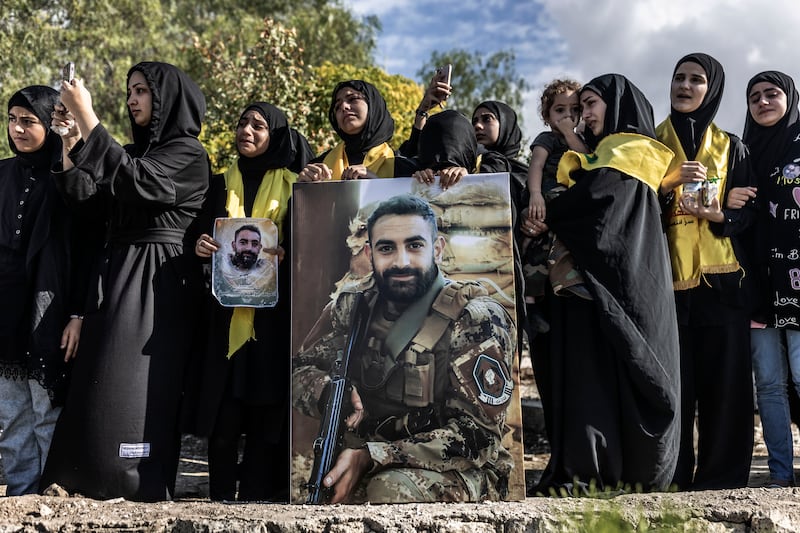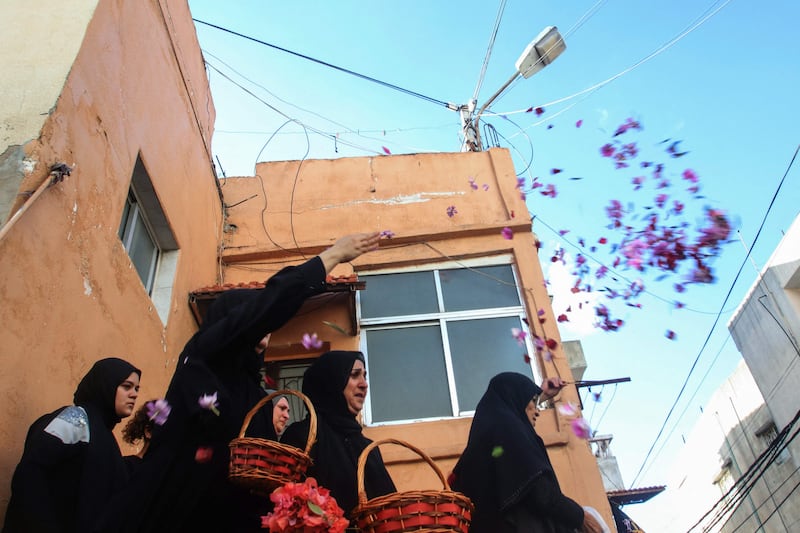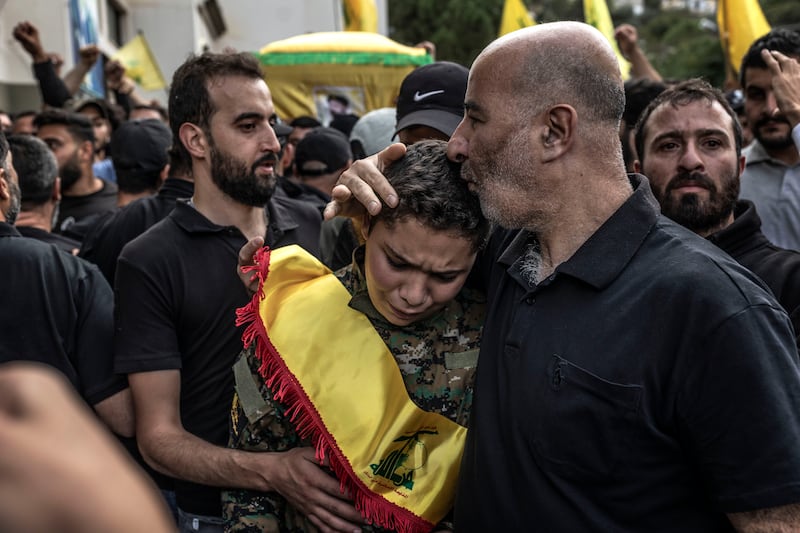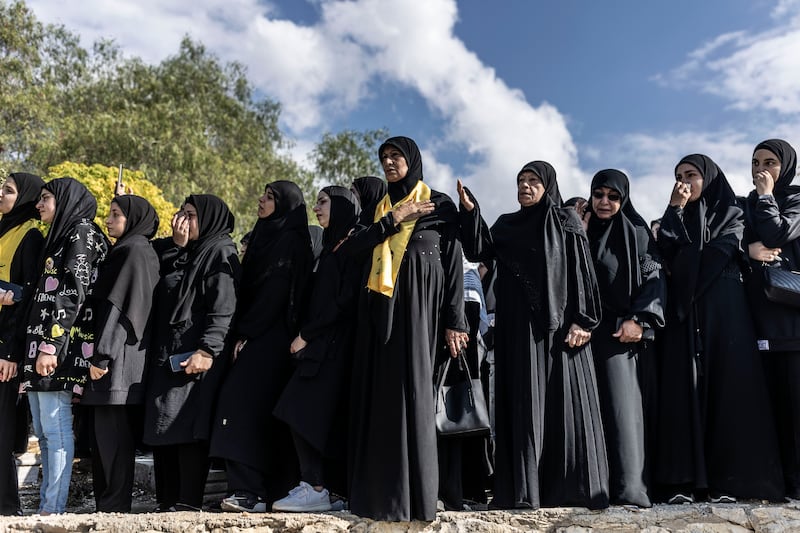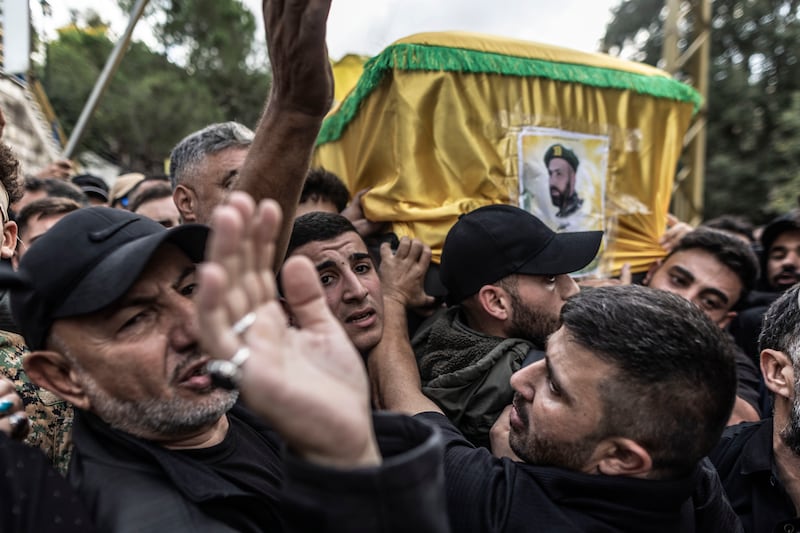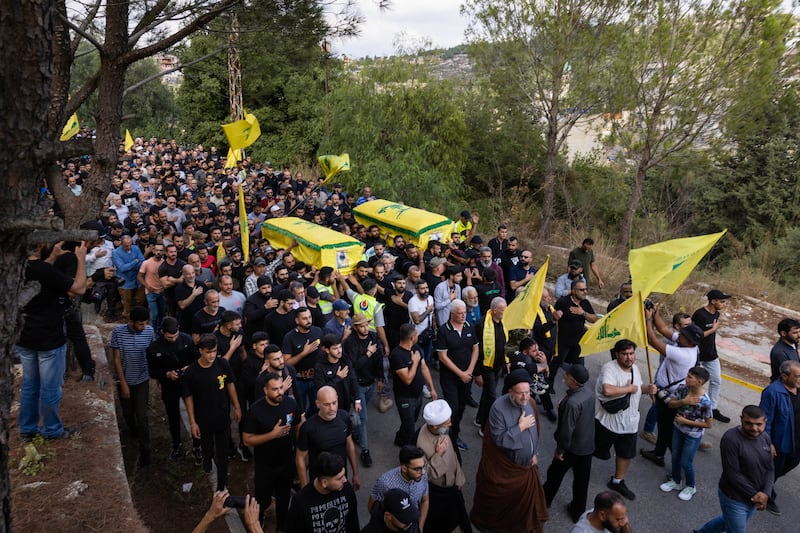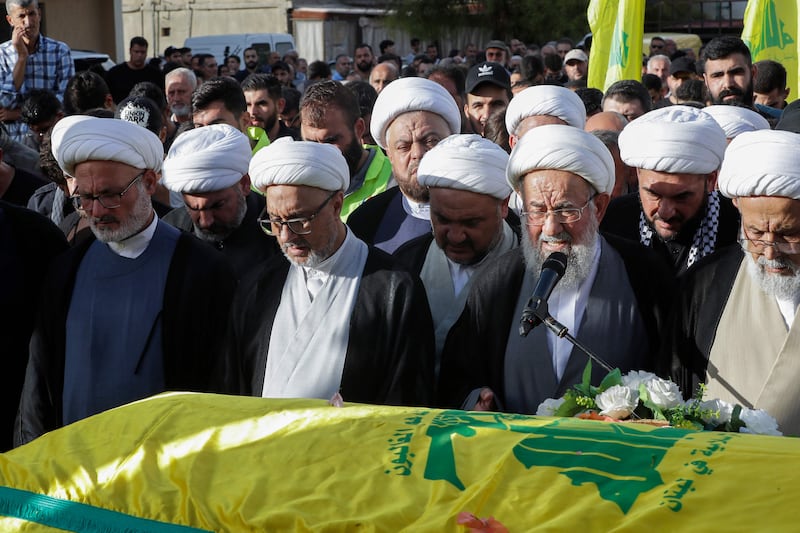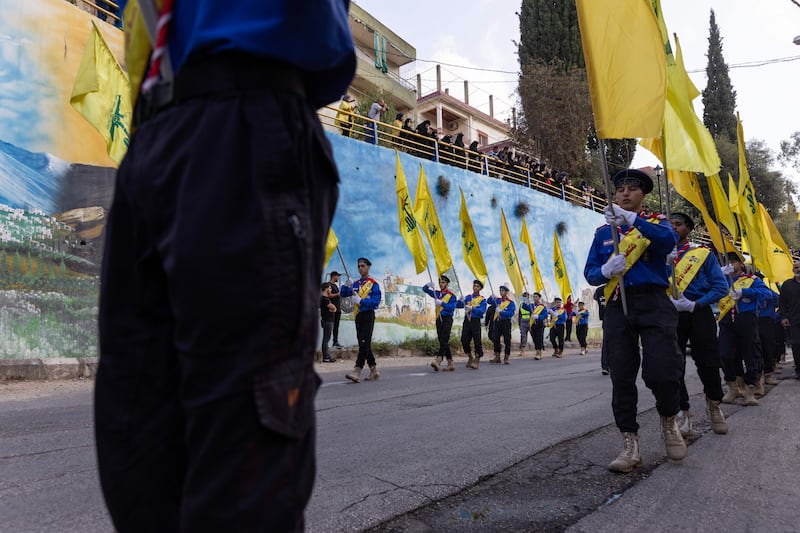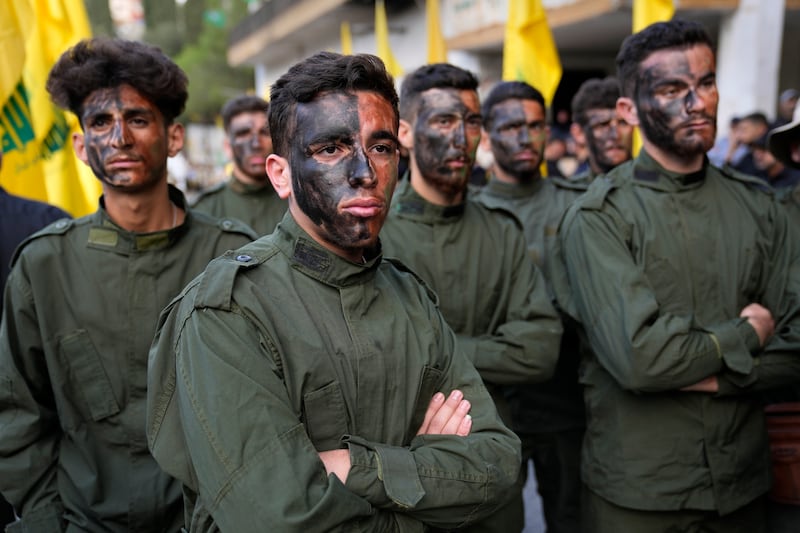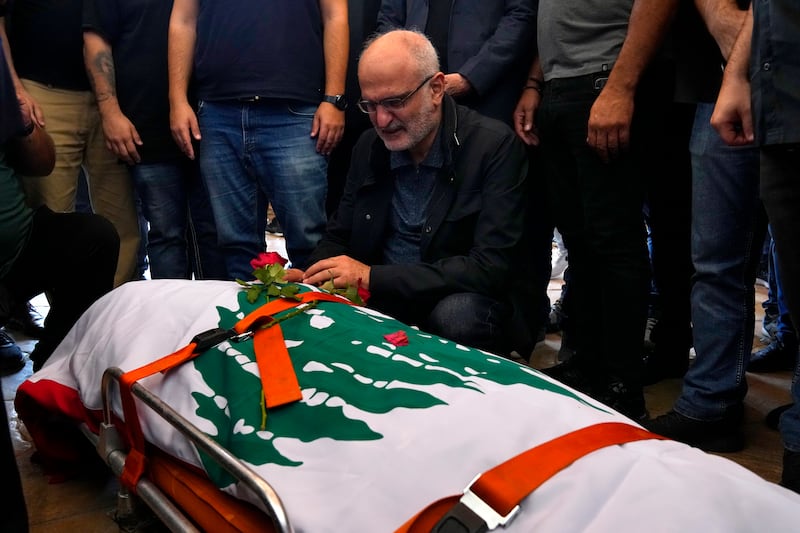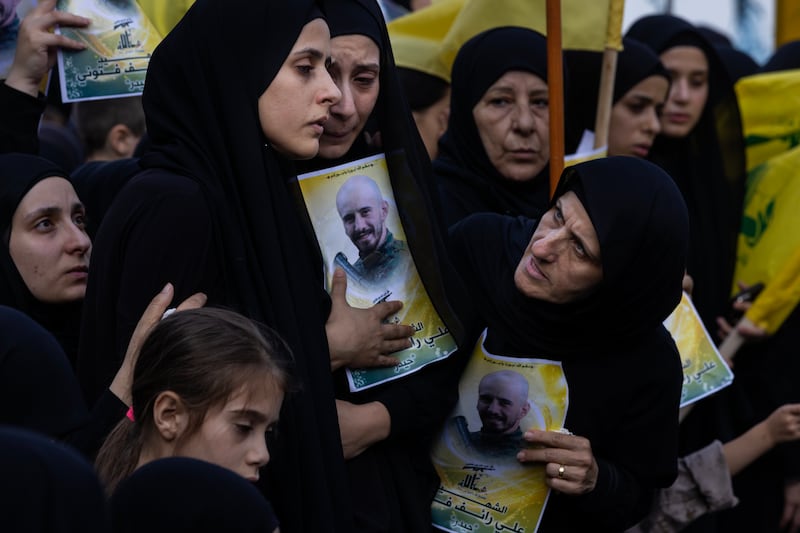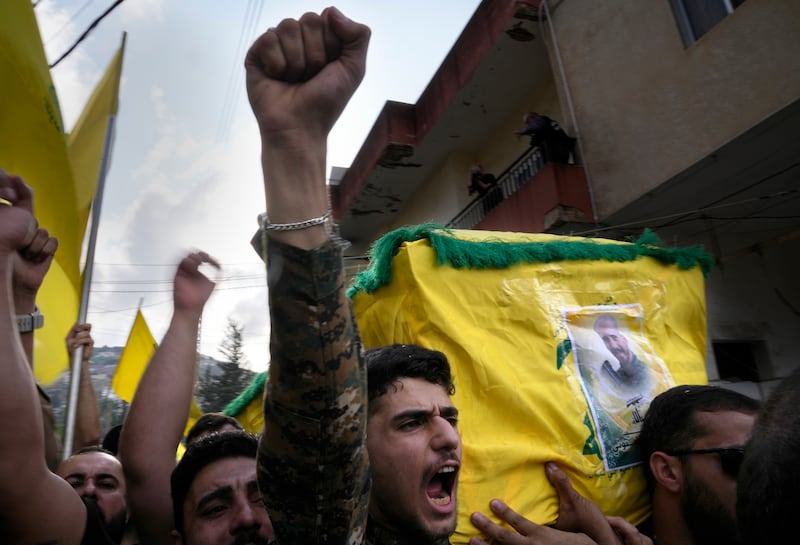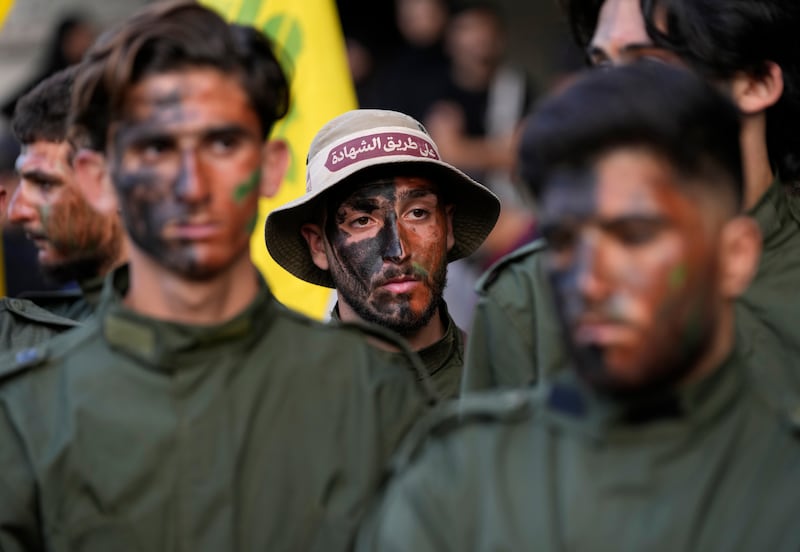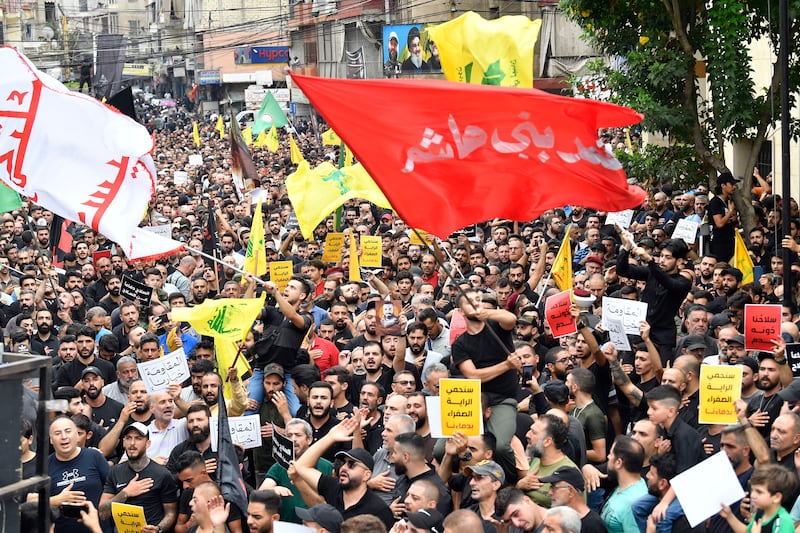Live updates: Follow the latest news on Israel-Gaza
As Israel expands its ground assault into Gaza, the scale and intensity of activity on the Lebanon front has also increased, reflecting Hezbollah’s willingness to support Hamas even at the risk of igniting a broader regional conflict.
“The rules of engagement, which have been so far relatively respected, are being increasingly tested day after day, so no one can dismiss the risk of a wider escalation,” said Karim Bitar, professor of international relations at Saint Joseph University in Beirut.
Hezbollah said on Tuesday it had “killed and wounded” the crew of a Merkava tank near northern Israel's Pranit barracks. It was not immediately known how many soldiers were killed in the attack, as the Israeli military does not immediately acknowledge fatalities.
Overnight, Israeli forces struck the outskirts of several southern Lebanese towns – Ramia, Aita Al Shaab and Labouneh – with white phosphorous and artillery.
The Israeli military said the attack had been aimed at Hezbollah military positions, including a weapons cache.
The use of white phosphorous by Israel in its attacks on south Lebanon has been documented on several occasions by rights group Amnesty International. Its use is banned under international law.
Although Israel and Hezbollah have exchanged fire almost daily since the conflict began, the cross-border bombardment has significantly intensified since last week, after Israel announced the “second stage” of its war on Hamas.
Yemen’s Houthi rebels also claimed to have launched “a large batch of ballistic and cruise missiles and a significant number of drones” towards Israel’s southern city of Eilat on Tuesday – the third such operation claimed by the rebel group.

Gaza invasion a 'red line' in 'unity of fronts' strategy
“We have seen a widening of the geographic area in which the military operations are happening,” Mohanad Hage Ali, a senior fellow at the Carnegie Middle East Centre in Beirut, told The National.
Since 2021, Hezbollah and its allies have employed a strategy commonly referred to as the “unity of fronts”, in which the respective groups would pool resources, tactics and weapons, Mr Ali explained.
The strategy saw them form a “a Nato of non-state actors, if you will, in which they would all join in if attacked by Israel and that would deter Israel from launching attacks against these organisations”.
“So what we're seeing now in south Lebanon has been in the works for years,” he explained.
“Hezbollah has to step in to try and draw a red line around the invasion of the Gaza Strip and destruction of Hamas.”
The unity of fronts strategy has also been enacted in Yemen, where the Iran-backed Houthis have launched attacks on Israel over the past three weeks, and in Iraq, where Iran-backed groups have attacked US military instalments.

How has the Israel-Lebanon front evolved?
The gradually escalating conflict has been more or less continuous since hostilities began on October 8, punctuated by brief lulls in the bombardment.
Three weeks ago, when the conflict first erupted between Israel and armed militant groups in Lebanon led by Hezbollah, the Iran-backed party primarily launched attacks on Israeli military instalments – intelligence watchtowers, surveillance infrastructure and tanks. The vast majority of casualties were soldiers.
Hezbollah has also allowed Palestinian groups such as Islamic Jihad and Hamas to cross into Israel for limited operations.
The exchange of fire was largely tit for tat: whenever Israeli shelling killed civilians, Hezbollah or its allies would also attack civilians. If an especially high death toll was announced in Gaza following intense aerial bombardment by Israel, groups in south Lebanon would, in turn, intensify their own attacks.
But the tactics have since evolved.
Hezbollah and its allies intensified attacks on Israel following the latter’s high-intensity bombardment of Gaza last week, which was accompanied by a ground operation conducted under the cover of a total communications blackout.
Israel, in turn, has responded by striking up to 20km into Lebanon in areas such as Jezzine, no longer limiting itself to the border – a significant boost in hostilities.
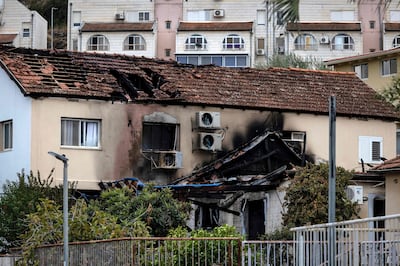
Hezbollah's aims
Hezbollah aims to prevent a military invasion of the Gaza Strip, or at least keep Israel too occupied to focus its full attention on the enclave.
The group is sending the message that “it will step if will step in and will be part of this conflict if Israel continues its ground invasion in Gaza”, Mr Ali explained.
“And secondly, it's also an attempt to engage as many Israeli soldiers in the north to divert some of the resources away from the Gaza Strip,” he continued.
“Hezbollah will keep phasing its escalation to try an avoid a war, as it tries to send the message to Israel that it needs to limit its operation in the Gaza Strip, or this will get out of hand.”
To date, at least 50 people have been killed in Lebanon since the conflict with Israel erupted – mostly Hezbollah fighters and some fighters from allied groups. There have been four civilian casualties, including Reuters journalist Issam Abdallah.
Most of Hezbollah’s fighters have been killed in Israeli drone strikes, leading the powerful group to unveil its surface-to-air missile capability for the first time on Sunday when it downed an Israeli drone.
Eight Israelis have been killed in attacks coming from Lebanon, the vast majority of them soldiers.
Thousands of people have evacuated or been displaced on both sides of the border.


